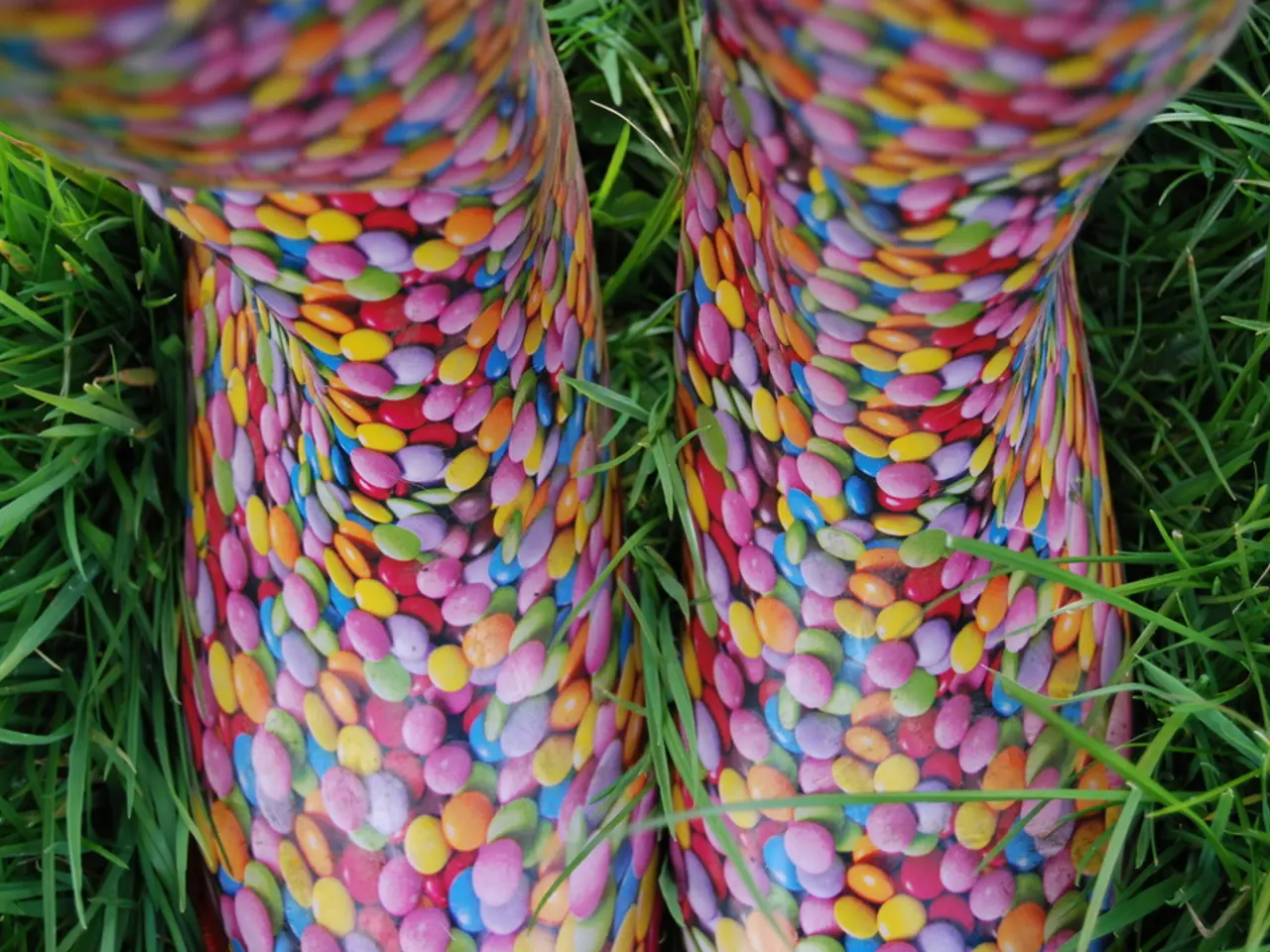Exploring the Captivating Color Play in Precious Stones
Iridescence, a captivating phenomenon that adds an extra dash of magic to gemstones and the natural world, is the result of light behaving in fascinating ways as it travels through or around spaces and surfaces of materials. This mesmerizing play of colours can be seen in a variety of gemstones, from pearls to moonstones, and even in man-made materials like coated glass beads.
The source of iridescence in gemstones is often thin layers, internal structures, or surface textures that interfere with light waves. For instance, gemstones displaying iridescence commonly have layered structures or microscopic platelets that reflect and refract light in a way that different wavelengths interfere constructively at different angles, creating a spectrum of colours that shift with the viewing angle.
Pearls, with their lustrous iridescence, are a prime example of this phenomenon. The iridescence in pearls arises from nacre, a layered crystalline substance composed mainly of aragonite (a form of calcium carbonate). As light reflects off the many thin layers within the pearl’s surface, it creates interference effects, resulting in the orient of pearls, a term used to describe their unique and varied colours.
Moonstone, another variety of feldspar, also produces iridescence, but it is more subtle and can result in just a hint of blue. This optical effect, known as adularescence, is a soft glow or sheen that results from light scattering between thin layers within the mineral structure.
Other gemstones can display related optical effects like colour change or chatoyancy, but iridescence specifically comes from the interaction of light with structural layers rather than just surface reflection. In opal, white light is dispersed so that different spectral colours are separated, resulting in the play of colour. However, unlike other gemstones where iridescence is caused by layers, in opal, it is due to diffraction and interference from sub-microscopic spheres that are regularly stacked with spaces of only a few hundred nanometres between them.
In summary, iridescence in gemstones is a structural optical effect caused by thin layers or microscopic crystalline arrangements. From the shimmering orient of pearls to the soft glow of moonstones, iridescence adds a touch of enchantment to these treasured gems, making them a delight for the eyes and a source of fascination for gem enthusiasts worldwide.
- The Foundation of Gemmology offers a variety of courses and workshops to explore the science behind iridescence in gemstones, delving into the structures and layers that create this enchanting optical effect.
- In addition to its publications about gemstones, the health-and-wellness sector has also taken an interest in the fitness-and-exercise benefits of working with gemstones, using their shimmering iridescence as a source of motivation and inspiration for achieving health goals.
- Sports teams and athletes alike have begun incorporating gemstones into their equipment to harness their unique properties, with iridescent stones believed to improve focus and boost performance, adding an extra edge to sports sciences.
- Furthermore, researchers in the field of science are constantly discovering new ways to utilise iridescence in gemstones, with advancements in technology allowing for the creation of synthetic iridescent materials that mimic the natural beauty of gemstones, paving the way for novel applications across various industries.




